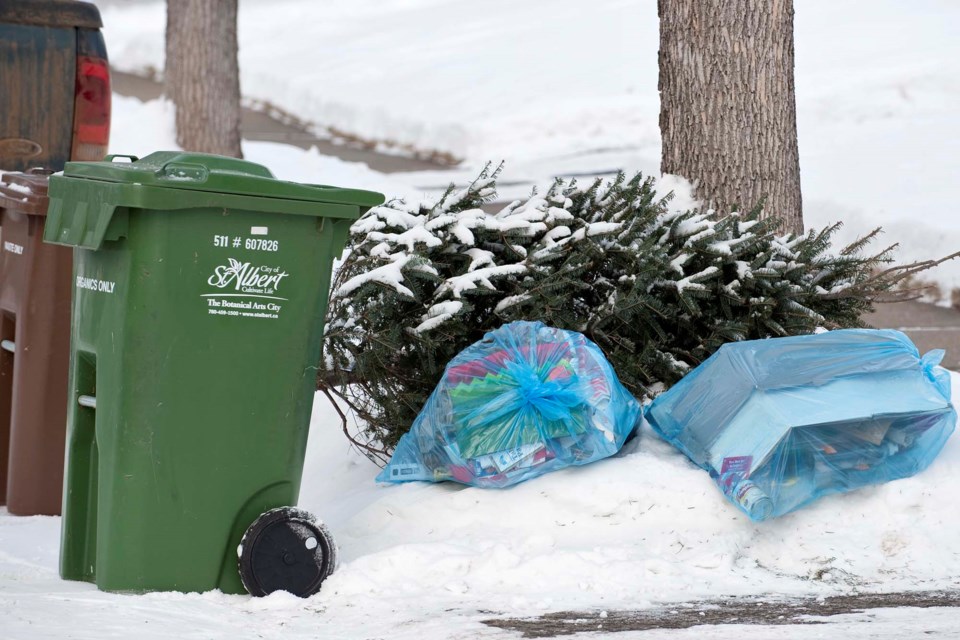St. Albert could miss at least eight of its environmental targets this year due in part to the pandemic, new data suggests.
Members of the St. Albert environmental advisory committee got a preview of the 2019 Report on the Environment during an online meeting Sept. 24.
The report tracks the city’s progress toward 21 environmental performance targets set out in its environmental master plan that it aimed to meet by the end of 2020. This year’s report was supposed to come out in April but was delayed until now due to the pandemic.
Emissions
The master plan set two greenhouse gas reduction targets for St. Albert to reach by 2020: corporate emissions were to be 20 per cent below 2008 levels, while community emissions were to be six per cent below 2008 levels.
City environmental co-ordinator Meghan Myers said the city’s corporate emissions fell six per cent last year compared to the year before and stood at 11 per cent below 2008 levels.
“In the community, unfortunately, we have a ways to go,” she continued, as emissions there are nine per cent above 2008 levels.
City officials reported a roughly 45-per-cent drop in road traffic in St. Albert during the early months of the pandemic, which, when combined with extended closures of many public buildings, reduced the amount of fossil fuels burned (and heat-trapping pollution produced) in the city.
A May analysis by the Alberta Capital Airshed Alliance found that nitrogen oxide levels in St. Albert (a proxy for greenhouse gas pollution) dipped slightly in April but returned to average levels by May, suggesting any emissions reductions from the pandemic were short-lived.
Barring significant changes in municipal and residential behaviour in the next three months, it's highly unlikely that St. Albert will be able to meet its 2020 emission reduction targets.
Trash and transit
St. Albert has two 2020 targets for waste: it wants to produce at most 105 kg of trash per person per year and divert at least 75 per cent of its waste from the landfill.
St. Albert residents sent some 123 kg of trash to the dump per person last year and diverted 62 per cent of their waste from the landfill – essentially unchanged from 2018.
St. Albert would need to send significantly less trash to the landfill this year in order to reach its 2020 target, and based on data from May to August, that doesn't appear to be happening. Roseridge Landfill manager Susan Berry said St. Albert sent about five per cent more waste to the dump during those months than it did over the same period in 2018 and 2019.
St. Albert’s transit target is to have ridership grow at or above its rate of population growth (currently 1.11 per cent).
Myers said the city’s ridership dropped 7.6 per cent last year due in most part to route changes caused by the closure of the Groat Road Bridge in Edmonton.
Ridership plummeted again this year due to the pandemic, with city spokesperson Debra Clark reporting a 50 per cent drop in commuter ridership year-to-date relative to 2019. City buses would have to become remarkably more popular in the next three months for St. Albert to reach its transit target at this point.
Water and community
Myers updated the committee on the city's progress toward two water-related targets: one to cut water use to 200L/person/day and another to keep municipal pesticide use to less than 0.25 kg of active ingredient per hectare per year.
Heavy rains last year drove St. Albert’s 2019 water consumption down to 220 L/person/day, but also led to a bumper crop of weeds, causing the city to exceed its pesticide use target for the first time since 2015, the committee learned.
Those same rains washed more nutrients into the Sturgeon River, causing levels of phosphorous and suspended solids to drop to good from excellent levels, the committee heard. The city's 2020 target for water quality was to "reduce" such pollutants in the Sturgeon.
Heavy rains likely reduced the need to water lawns and gardens, which would boost water conservation, and the city has seen water use drop by 20 L/person/day before in 2016. The city didn't exceed its pesticide target by a whole lot in 2019 either – it was about 28 per cent over – and stayed below the target for three of the last five years. While more runoff certainly wouldn't "reduce" pollutants in the Sturgeon, past water quality readings show that the Sturgeon was actually doing relatively well on this front, having ranked good or excellent on all parameters of the city's river water quality index going back to 2011.
The city continued to make progress on its environmental stewardship goals in 2019, blowing past its 2020 target of 1,000 people participating in naturalization activities with a record 1,668 participants. It also issued its 133rd Environmental Initiatives Grant, edging closer to its 2020 goal of 150 grants.
Myers joked that 2020 would be “very dire” for the city on these fronts, as there were no naturalization events or environmental initiative grants this year due to the pandemic. That essentially guaranteed that the city would miss these two targets.
Myers said the full report on the environment would be released online later this fall.




